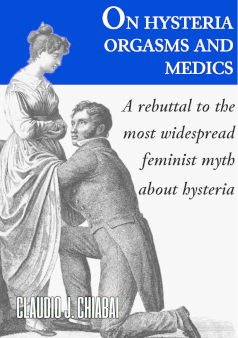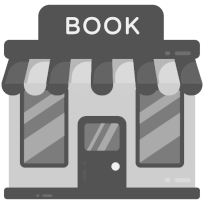A refutation of one of the
most popular myths of Feminism
This book revisits the fascinating historical journey initiated in What the heck is hysteria?, to confront one of the most persistent and popular myths about hysteria. With firm determination, it dismantles the belief that doctors of the past treated this ailment through the masturbation of their patients. According to this myth, doctors supposedly ignored or denied the possibility that women could experience sexual pleasure outside of coitus, which would have perpetuated a reductionist and erroneous view of female sexuality.
Through a thorough analysis of the medical texts of the time, this book provides a solid and compelling refutation of such ideas, precisely dismantling each of the pillars of this myth. For example, it debunks the false equivalence between the term paroxysm and orgasm, and disproves the simplification that all treatments for hysteria were based exclusively on inducing orgasms. The work sheds light on the rich variety of methods that were employed to treat hysteria, presenting a much broader and nuanced view of what medicine was like at the time.
As these myths are dismantled, the book challenges the erroneous perception that doctors of the past were ignorant about sexuality and even health. It convincingly refutes the notion that their knowledge was scant and deficient, and that their practices lacked value compared to modern medicine. This work shows how the myth is an insult to their memory and the efforts of those who, with the limited resources of their time, gained knowledge and offered treatments that we can now appreciate in a more informed perspective. In short, these doctors laid the foundations for what we enjoy today in terms of health.
Although this work is a continuation of What the heck is hysteria?, its focus on a specific myth, along with the exploration of new areas and in-depth analysis of others, gives it particular and unique value. Like its predecessor, this book stands as an indispensable reference for anyone wishing to fully understand what was called hysteria.
Ch.1: The Myth
This chapter examines the origins of the myth that claims women were treated by inducing orgasms through masturbation.
Ch.2: Orgasm vs. Paroxysm
The myth claims that paroxysm is synonymous with orgasm. This chapter breaks down their differences, demonstrating the impossibility that doctors could be so ignorant as to not distinguish between the two.
Ch.3: Symptoms, symptoms, and more symptoms
This chapter delves into the hysterical symptoms associated with the myth, contextualizing them within the true framework of hysterical presentations.
Ch.4: On the sexual nature of hysteria
This myth, widely promoted by Freud and his followers, claims that hysteria had a sexual root. Here, that theory is refuted, showing the varied causes attributed to the disease.
Ch.5: The therapy
This section meticulously details the most employed methods in the treatment of hysteria, providing a clear perspective on the medical practices of the time.
Ch.6: The best argument
This chapter examines a famous reference from Forestus, a 16th-century physician, that the myth uses as evidence to support its claims. However, a thorough analysis shows that this interpretation is incorrect.
Ch.7: Dr. Swift’s Advertisement
An advertisement poster is presented as proof that masturbation was used as a treatment. This chapter examines that supposed evidence and discredits it.
Ch.8: What about female orgasms?
Although doctors acknowledged the existence of female orgasm, this chapter reveals why the term orgasm was absent in treatises on hysteria. The answer is surprisingly simple.
The Myth as an Insult
Beyond being false, this myth is an insult to the intelligence of the doctors of the time and anyone who investigates hysteria seriously. Here, the reasons are exposed for why this idea is as absurd as it is offensive.
Appendix A: Freud and the myth
This appendix shows that, despite his close relationship with the study of hysteria, Freud had no direct connection to the myth of masturbation as a treatment.




![YouTube Channel [Live]](images/socialmedia-yt-live.png)

